ASUNCION, Paraguay – Life is settling into a rhythm here in Paraguay’s capital city. I start my day at a homey hostel called Casa da Silva with a cup of cafe con leche and some bread and cheese and conversation with Doña Da Silva, her granddaughter Angelica or Lola.
After this, it’s time for me to head to work. In the first days, it was an internet cafe down the street, but on my third day I discovered the Lugano Café, which has free WiFi – a scarce commodity in a city where only 16% of the population has internet access, according to a recent headline I read – so it’s become my unofficial headquarters. There, for the price of a couple hours at any other internet café, I can have a cortado, an espresso with cream, and log on and work to my heart’s content. I’ve discovered Asuncion is an excellent place to work because so little actually happens here, there is little to distract me.
My walk to the Lugano and back again has become one of my daily pleasures; I’m lucky to have along the route the city’s most important plazas, where I can watch the daily life unfold.
Out the creaky front door facing Eligio Ayala Street, past the cattycorner restaurants Flor de la Canela, a delightful Peruvian seafood place, and Bar San Roque, a classic 1950s-style bar-restaurant that serves typical Paraguayan food (empanadas, grilled beef and the like). Past the khaki-dressed police that dot the streets here for security – on my first day, as I made my way to the nearby riverfront – just two blocks away, you can see it from the intersection – to take a leisurely walk, they stopped me and warned me not to do it. “It’s a red-light district –very dangerous,” one of them told me, and several others have echoed his words since, so I haven’t attempted it. Yet.
Instead, I cross the street to Plaza Uruguay, a shady refuge among the busy streets. Green patches amid the dusty red soil are crisscrossed with pathways and benches and graceful white statues of Greek women, where people sit conversing, watching the birds, reading a newspaper or book, perhaps from one of several bookstores on the plaza, and above all, drinking their mate – or, now that the days have grown warmer, the cold-water version, tereré. Ornately leatherworked thermoses are giving way to plastic pitchers, which can be rented from yerberia stands that also sell “yuyo,” homegrown mixtures of herbs for every ailment that are mashed in mortars and added to the mate to bring a variety of health benefits.

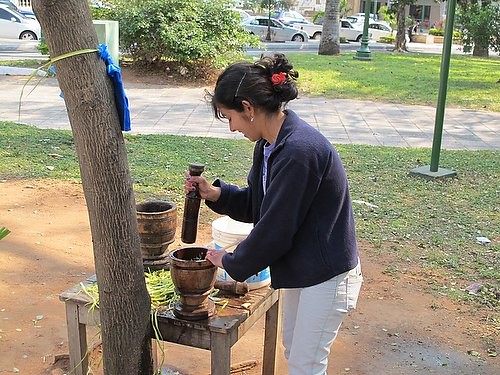
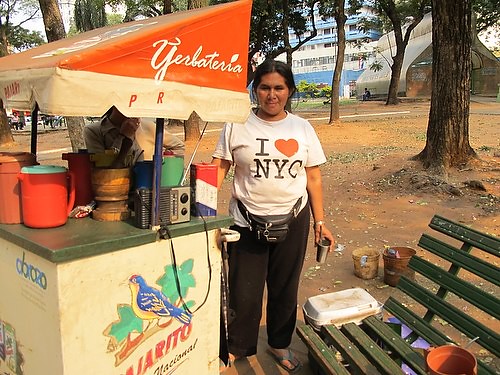
Today the plaza is more exciting than usual because it’s the day of a folklore festival in nearby Plaza Democracia, and bevies of bright-skirted girls are practicing their steps and posing for photos. They look as if they’ve just stepped out of the last century with their ruffles and hairpieces and elaborate embroideries. I stop to shoot a few and watch as they preen and pose, as proud mothers touch up hair and makeup and proud fathers record the event for posterity.


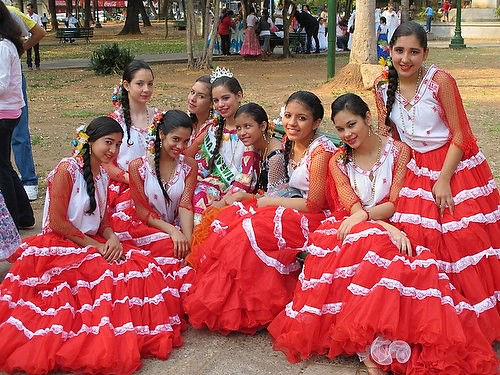

Crossing the plaza I continue on along Mariscal Estigarribia, one of the city’s most interesting streets, with its curlicued and collonaded examples of 18th-century architecture; past the Café Literario and the Fine Arts Museum, a block that’s prettily paved and painted in pastel colors and planted with luxurious palm trees. I’ve become accustomed to the odd juxtaposition of a lingerie store, its plastic models provocatively posed in pink lace and black leather and French maid costumes, and the Fine Arts Museum, here on what is apparently one of the most manicured intersections in the city. Further down is are the shops selling Paraguayan artisanry, a collection of life-sized carvings of indigenous people with features so exaggerated and comical it makes me doubt they were produced by any real indigenous people.
On to the huge four-part plaza that makes up the heart of the city, each part with a different personality: the old-fashioned and carefully manicured Plaza O’Leary; Plaza de los Heroes with its spectacular neoclassical Panteon de los Heroes and its flute-playing Ecuadorean artisans; the postmodern Plaza de la Democracia with its multiple levels and underground shops, and Plaza Libertad, where vendors sell traditional Paraguayan crafts and “hippie” ware, such as big beads and tattoos and piercings. I stop occasionally to buy a hamburger from one of the street vendors (I’m not a big meat eater, but I confess to having developed a taste during the Forum of the Americas for the Paraguayan version, grilled before your eyes along with a fried egg, and served with melted cheese and fresh lettuce and tomato – all for a dollar. Take that, McDonald’s).
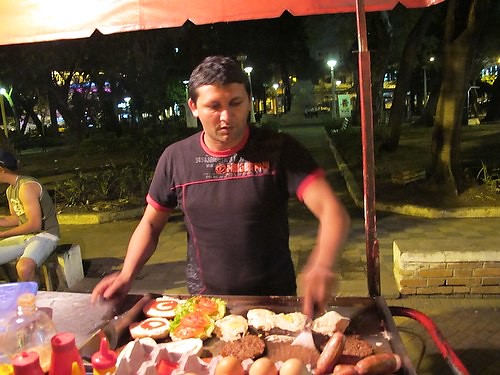
Today I wander through and talk with some of the artisans; my favorite is Julio DiFrani, a sculptor who, together with his wife Gladis, portrays the country’s indigenous heritages with beauty and dignity.
And special for the occasion are the red-earth sculptures of Oscar Arena, who will be continuing to shape these creations from the red Paraguagan soil here on Plaza Democracia all week.
One more block, where I stop to read the headlines – at the top of the news, ABC Color, with its constant campaign against President Lugo’s progressive government, is for the third day decrying the Environmental Ministry’s attempts to ban transgenic crops. I recall the heartfelt plea of the campesina leader Maggie Balbuena, addressing President Lugo at the closing session of the Social Forum of the Americas, to ban transgenics, a request that will be an uphill battle here in Paraguay, the world’s fourth largest soy producer, where vast tracts are deforested and campesinos displaced every year to make way for Cargill and other giant US-based transnationals.
La Ultima Hora, the other leading newspaper, tends to favor the president and has spent the week following up on an investigation of the president of the Congress, a highly powerful leader of the conservative Colorado Party which was linked with the dictatorship. The congressional leader, it seems, has large holdings of property that he has not been paying taxes on for some 12 years, and upon being discovered, negotiated a deal in which he could pay back just 5 years’ worth.
Now at the ultramodern Lugano’s, where the waitresses have begun greeting me with the warmth of an old friend, it’s easy to forget I’m in a developing country. But I’m working away and suddenly I look out the window through the parked cars to see a horse and wagon parked there among the rest of the traffic, and I smile and grab my camera.
The waitresses watch me play tourist, amused, but it’s ok. It’s just this sort of crazy contrast that makes my life on the road one I wouldn’t trade for anyone’s.
Here are a few scenes from my first days in Asunción:
Created with Admarket’s flickrSLiDR.
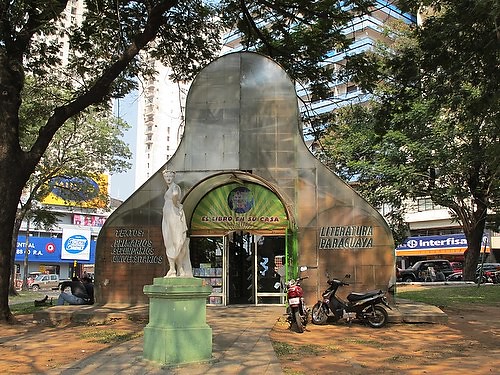
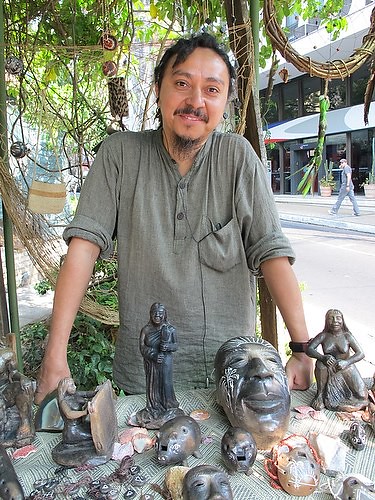
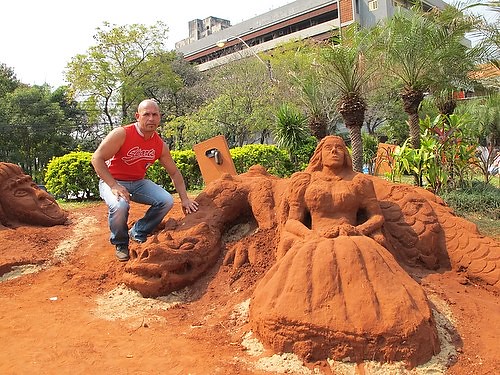
Leave a Reply